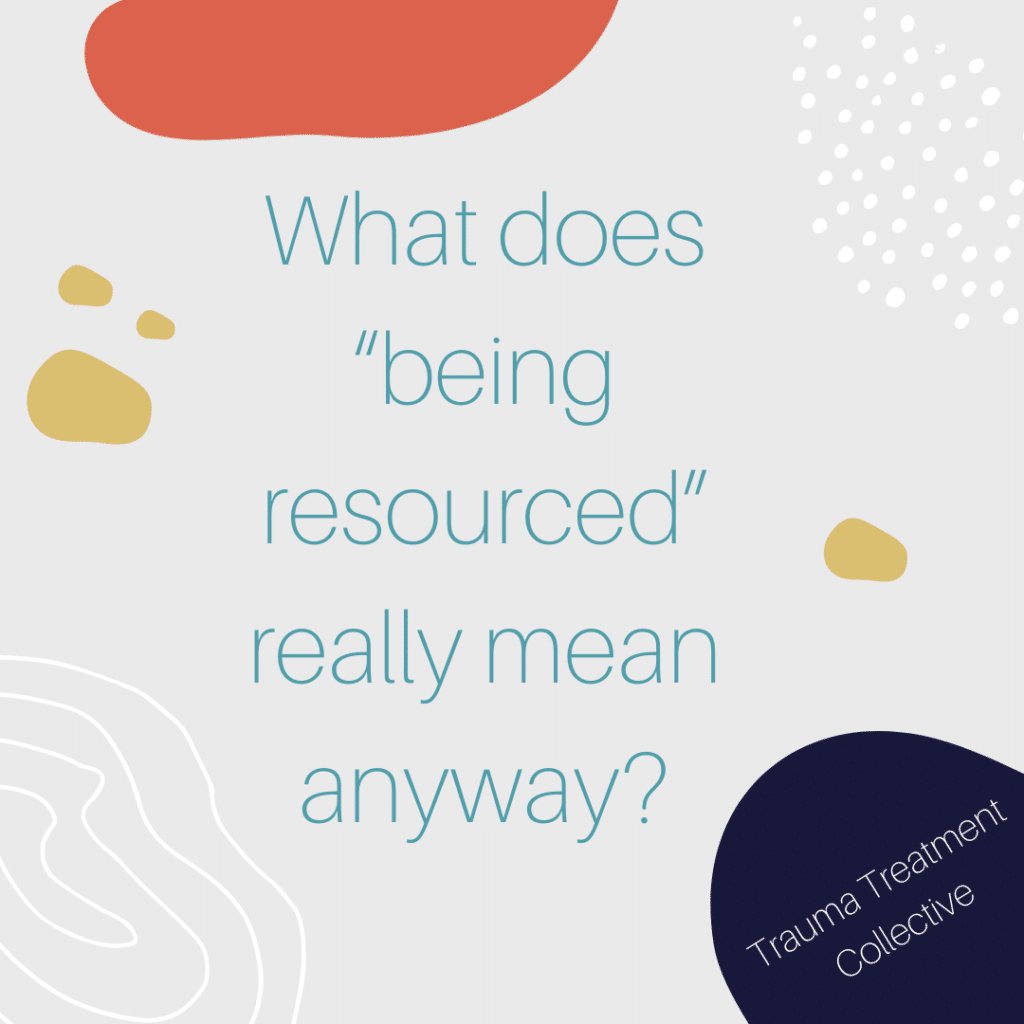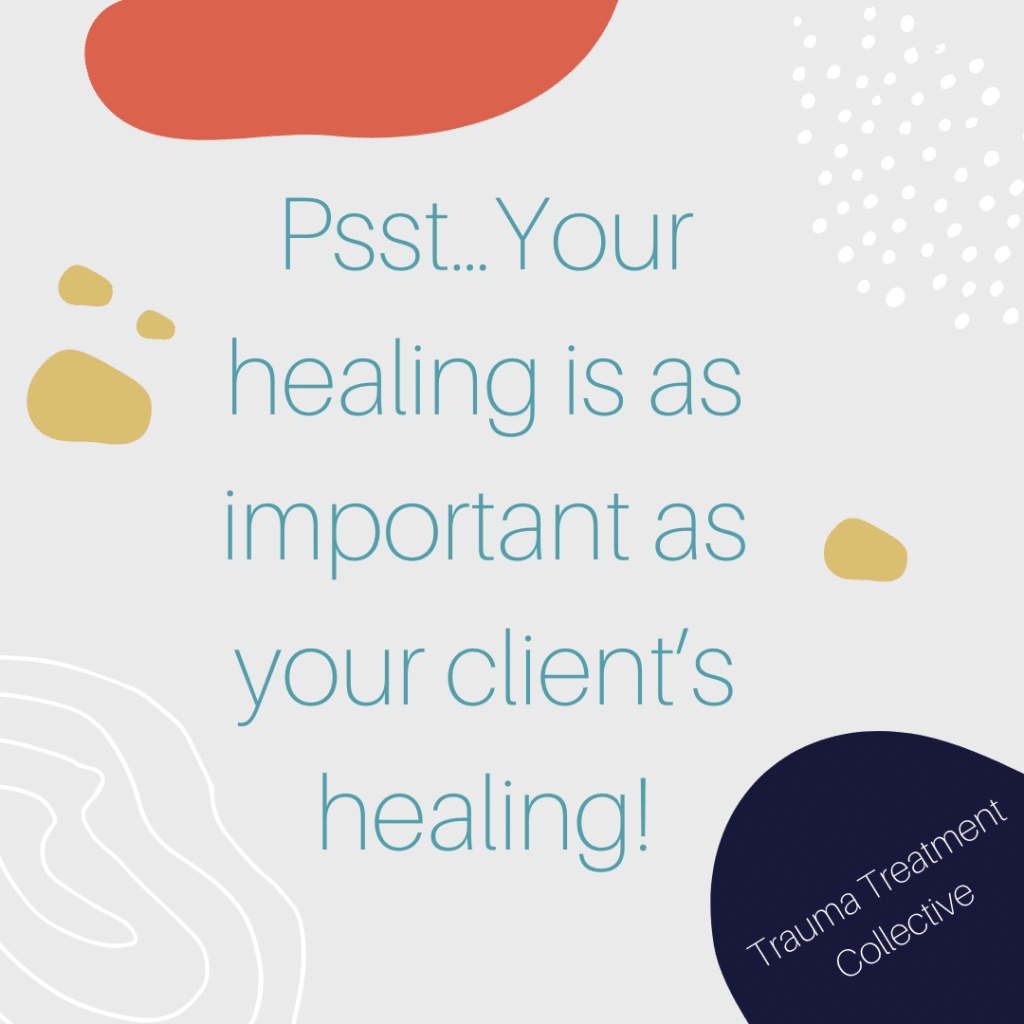We spend a lot of time talking with our clients about the importance of being resourced in their treatment process. Resourced is one of those words that we throw around frequently, but do we really know what it means? And an even better question is do we live it out in our own life?
Yup, that is right. I am taking the focus off the client and turning it to you, the professional. I know most of us were taught that we are not to consider our needs, thoughts, wants, desires, etc. in the treatment process – all of our attention should be focused on the client. I would even dare to say many of us come into this work because we learned in our childhood how to be a good caretaker, so we may have some of our own unprocessed trauma to work with too. Either way, this blog is dedicated to taking a deeper look beneath the flashy and shiny modalities and interventions to look at some of the lesser talked about but foundational pieces to being an effective trauma treatment professional.

Before we dig into the three tools that can help you be more effective, let’s go back to the definition of resourced. Being resourced means feeling supported, safe, calm, and connected when it comes to the nervous system. In this resourced state, we are not engaged in our defense responses. I like to talk with clients about the difference between surviving and thriving. The goal for our clients (and also should be for ourselves) is to thrive. When we are well-resourced, we are able to thrive in our careers as trauma treatment professionals.
So let’s dig into what can significantly help us to feel well-resourced as a trauma treatment professional.
Building a Strong Referral Network
The first tool we will discuss is building a strong referral network. I have found that having a strong referral network is very gratifying. I love to help my clients find the right professionals so they can continue their healing journey once we are finished with our portion of the work, or even to have additional support while we continue our work together. Not only does it help the client continue their healing journey, but it helps me to know that I don’t have to know everything or hold this case on my own. I can tap into my referral network to collaborate or refer out.
I also like having options for helping potential clients find the right match if I am not a good fit. Having a good referral network helps me feel equipped in most situations.
Networking and building a strong referral list are more than just having a list of names. Over the years, I have learned it requires a little more. Here are some suggestions to consider:
1. Be familiar with the needs of your ideal client. This will help you identify the right types of referrals.
2. Have conversations with your clients about the potential for a wraparound approach or referrals later in the treatment process. This helps clients have a smoother transition if this is the route treatment takes.
3. Build true and authentic relationships with your referral sources. Understand their way of working, theoretical orientation, and major modalities used. This helps you to make good matches.
4. Create an open line of communication with your referrals. This helps to ensure clients make a smooth transition into the new treatment process.

Pursuing Your Own Healing
The next tool we will discuss is knowing when you need to do your own healing work. The question is not if you will have to do your own healing work– it is rather when and how you will choose to heal. As I have continued to grow in my trauma treatment journey, I have become very aware of my own signs that indicate I need to do some work. Do you know your signs?
Now, before we get into “A + B = C” kinds of thinking, I want to be clear and say that nothing is ever absolute. So always keep an open mind and be willing to experiment as well as be guided by your curiosity in your healing journey. Your signs could change over time.
I am going to be transparent in hopes of giving you a clear example of what I mean as it relates to knowing your signs. My stress response is more sympathetic-driven. After many years of work, I am sure this pattern was developed in childhood to deal with the grief and loss of my mother’s sudden and unexpected death. When I am triggered in present-day experiences, I may feel anxious and a little panicky. I also may have racing thoughts or feel the need to do something right away.
Knowing my response has been helpful when trying to quickly identify what is happening for me and attuning to my needs. I want to encourage you to be curious about your own signs that indicate you need healing. We all have “junk in the trunks”.
By continually being open to doing our own healing, we ensure that we are able to stay as healthy as possible in such a demanding line of work.
Engaging in Community
The final tool is… drum roll please… community. If you have been in the TTC community at any time, you probably know how passionate I am about community connection. So of course I won’t let this opportunity pass by without inviting you to engage in community.
When it comes to your professional community, I like to think of them as your inner and outer communities.
Here is a brief overview, but if you want to hear more, check out the podcast on this topic here.
- The outer community is like a place where you can go to ask for resources, find out about the latest trainings, or just stay in the know.
- The inner community is more connected to you as a person and professional.
Having an inner and outer community can help you feel supported and connected in your trauma treatment journey at a number of different levels. I want to encourage you to consider if you have these types of communities in your life currently when it comes to you as a trauma treatment professional. If yes, great! If not, start seeking out community today. It will be a game changer. I promise.
As you read this blog, I hope you have been taking a little bit of inventory and checking in to see if you have these three things. Maybe some are strong and thriving and others are either limping along or barely in existence. If it is more of the latter, no worries. There is no time better than the present to work on any of these tools. As I mentioned, they are rarely talked about, and they are vital to you thriving in trauma treatment.

